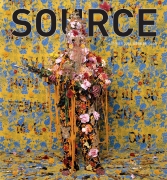EDITORIAL:
Issue 55 — Summer 2008
Issue 55 — Summer 2008
View Contents ▸
In the last ten years photography has taken a number of strides forward, including admission to contemporary art galleries (see review of the latest Tate show on page 48), new UK festivals (see news on page 4) and the growth in photographic publishing. But in other ways the infrastructure doesn't seem to have advanced at all. Following the announcement of Autograph's new 'diverse' archive (see opposite) and the touring show of the photographic collections of Arts Council England and the British Council (reviewed on page 72) both of which seem to auger well for photographic collections Mark Bolland looks at the recent record of UK institutions in securing and making sense of photographers' legacies. He finds some positive stories, such as the Paul Hill archive's deposit at Birmingham Library, but more generally a lack of coordination and resources.
Across the Atlantic at the Center for Creative Photography in Arizona its archivist Amy Rule presents a contrasting view, of a prosperous organisation with a clear vision of why and how photographic collections should be looked after once a photographer has passed on.
The striking image on the cover of this issue is from Hew Locke's new work How Do You Want Me? Discussing the series with Richard West he reveals his frustrations with reactions to his early work, the inspiration he drew from people's response to the death of Princess Diana and his personal idea of Britishness. Locke uses costumes, props and backdrops to explore the darker side of his psyche and the inspiration he takes from his Guyanese and British roots.
Thomas Haywood is interested in a use of photography as a means to slow down and contemplate the fleeting world that unfolds before him. In his Island series he draws on the story of the expulsion from the Garden of Eden, and its residual influence in people's search for their own paradise. Set in a community of expatriates on an idyllic island, the pictures offer unaccountable revelations and prompt reflection on the negotiation between fantasy and reality.
Esther Teichman's work is about loss, fantasy and desire, focusing on the bodies of her mother and lover and set against 'mythical' landscapes created from theatre backdrops, painted landscapes and studio spaces. Teichmann's utopian worlds exist only within the camera's framing and attempt to secure a dream against the fear of its dissolution.
— The Editors





